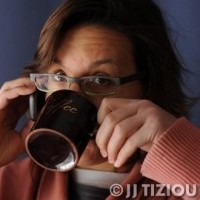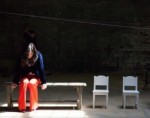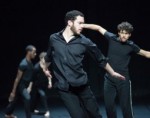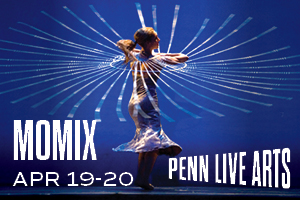
Tango Basics: A Beginner's Primer
By Anna Drozdowski
Meredith Klein, Executive Director of the Philadelphia Tango School is the mastermind behind the 2nd annual Philadelphia Tango Festival happening Memorial Day weekend in Northern Liberties. A mini Buenos Aires, this four-day sampler of classes, workshops, performances and public dances (called milongas by the tango cognoscenti) has tracks for the absolute beginner along with a la carte or immersion options for more advanced dancers.For those of you curious about the beginner track, I’ve prepared a rough guide to your new tango life, lifted liberally from my attempts at getting closer to this form.
Backwards in Heels
I moved to Philadelphia in 2005 and knew no one. I’d been long interested in tango and figured embarrassing myself in a new city was a small risk, so signed up for classes ready to knock it out of the park. I had rhythm, and did better in heels than most…what more did I need to know? Apparently I didn’t know how to walk. We walked. We walked again. And again. (And again.) We walked forwards and back. We walked sideways and looked for the center of the music. We walked alone and in pairs, eyes open and closed, holding hands and shoulders and other parts. I got impatient, wanting desperately to do something interesting; not understanding that this foundation of walking is the backbone, the beating heart of the dance. In fact, in tango all you need be able to do is put one foot in front of the other (all while staying on the music, with your partner, backward if you’re “following” and navigating the dance floor if you’re leading). Walking, it turns out, can be complicated.
Balance Point
In Argentine tango the weight of both partners is shared. Evolving from, what some research identifies, an extreme angle where both partners leaned in so much that they were supporting one another, modern versions of tango employ both an open and closed embrace. Throw out your notions of ballroom dancers looking over their shoulders and cartoon characters with roses in their teeth. This is a dance about two people finding a connection—physically, musically and, as many say, in the best case, spiritually and emotionally as well.
Meeting Halfway
Tango means many things to many people. For me, it was a solution to feeling funny about contact improvisation. It asks two people to come together and work collaboratively and silently with just a little structure and musical guidance. It asks that there is some give and take between what the leader (traditionally men) is inviting the follower (traditionally women) to do. It calls into question feelings about proximity, strangers, cooperation, contact, feminism and machismo. You can see that all fall away with two people who have found the right dance match—they’ve met in the middle and the bliss reads on their faces.
Beautiful Stranger
Tango is a social dance form, which means that you can show up solo or with a partner and you’ll dance with a number of different people over the evening. Traditionally this is 10 minutes counterclockwise around the floor to songs in a set, which allows the pair to get to know one another. The cortina or musical break, allows people to politely change partners or keep on going. Both leaders and followers initiate dances. Gone are the days of formal dance cards or my historic favorite--the silent language of fan-placement that signaled from across the room whether a woman was interested in being asked to dance or not. What has stayed is a decorum of formality and invitation to the dance floor in a contemporary context.
Bambi on Ice
I was dragged to my first milonga kicking and screaming and scared. A few months of lessons had prepared me for walking and the simplest of steps in a controlled environment. But the dizzying room full of partners effortlessly swimming in a circular pattern only prompted me to put on my shoes and park myself in a corner. Then I got some good advice: While spectating is an important part of the process, you learn fastest about dancing by doing it. With lots of different people. Second bit of advice: It is your partner’s job to make you look good. Not a bad ego boost. So admitting starter status is useful and going at your own pace, whether it be walking or embellishing or expanding into new territory, is perfectly acceptable. Everyone has been a newbie, which makes the community empathetic and eager for growth.
What’s Old is New Again?
Klein and dance partner Andrés Amarilla come from a teaching lineage birthed in Argentina in the 80’s that many refer to as Tango Nuevo, or “new” tango. Tango Nuevo continues to change the way that people learn the form, while the dance’s global renaissance and growing ranks of younger practitioners fuels its expansion. There is an ongoing debate about tradition and evolution, teaching and performance that runs through the community of dancers, scholars and arm chair enthusiasts interested in tango. In short, there are many shapes that tango takes in the 21st century and even more people who care about where it is going in the future. They all seem to agree that it happens best late into the night...
Fresh Blood
The Festival will bring in guest artists and instructors from around the country, vital to the development of the burgeoning local community and an expansion of Klein's Fishtown based School. New blood = better dancers. More dancers = growth and development. In Philadelphia, there are classes and milongas happening year round, often helmed by dance-partner pairs, which is useful when you’re trying to figure out which left foot goes first. Try Lesley Mitchell & Kelly Ray who are celebrating their 20th teaching year, Marc Hussner & Krissy McFadden at the Parlor in South Philly, or David Walter and Michele Berrios’ afternoon Tango Cafe in Society Hill. In Media, Lori Coyle-Magen and Eran Magen host the Tango Hop at Sangha Space, where lessons are also available, Guillermo Eklouss & Vittoria Natale are just over the Ben Franklin in NJ, and if you want to learn to walk like I did, Juan Carlos & Teresa Figueroa, based in Wilmington, offer classes in Philly. Both Temple and UPenn have tango clubs and for a great low-key entry point there is free dancing in Rittenhouse Square throughout the summer. The Tango Philadelphia Resource Guide breaks it down day-by-day.
Step in Time
George Balanchine’s quote “see the music, hear the dance” applies directly to this social form, where there are three basic types of composition: tango, vals (waltz) and milonga (this time referring to the musical style, rather than the name of the event). Milongas feature music that ranges the gamut from Golden Era classics to Piazzolla to more recent electronic compositions, and occasionally slip in another social dance style: swing, salsa or otherwise. Ask a tanguera or tanguero about how the dance and music is evolving, you’re likely to get an earful! One of the delights of advancing your understanding of the form is learning how you listen to music and what it makes you want to do (and finding partner who does it the same way). Philadelphia’s own Oscuro Quintet plays a pre-festival milonga at the Buttonwood Studio on Thursday evening, where you can learn the difference between the accordion and it’s tango-cousin the bandoneón.
The Great Equalizer
More often than not, tango devotees have a story about how the dance has changed their life. Some call it spiritual, others social, still others keep on dancing into their golden years for the exercise. It brings people together in real time and real company, and good dancing ignores all race, class, gender, social status and age divides. The shoes. The strut. The eyes-closed embrace. The wee hours on a Saturday night (and increasingly Tuesdays, Wednesdays, Thursdays, Fridays or Sundays as well…) help make sense of early morning mate and the community that comes of it.
2nd Philadelphia Tango Festival: May 25-28 2012. For tickets, registration and more information: www.philadelphiatangofestival.com Most events take place at the Ruba Club: 414 Green Street.
By Anna Drozdowski
May 23, 2012






.png)


